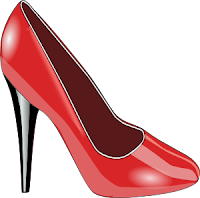The Colombian Flag

The design of the Colombian flag is attributed to one of the Colombian Founding Fathers -- Francisco Miranda. Simón Bolívar adopted the 3 striped flag in 1813. It was to serve as the emblem of Colombia, Venezuela, and Ecuador --which were all one country back then (according to a decree signed in Valencia Venezuela, with the date of October 28).
Miranda envisioned a revolutionary flag that would symbolize the riches and wealth (yellow) of the people of the Gran Colombia, separated by the blue of the two oceans, and the red that represented the yoke of bondage of Spain. Today, Colombian children are taught the red represents the blood spilt by patriots during the war of Independence.
Miranda envisioned a revolutionary flag that would symbolize the riches and wealth (yellow) of the people of the Gran Colombia, separated by the blue of the two oceans, and the red that represented the yoke of bondage of Spain. Today, Colombian children are taught the red represents the blood spilt by patriots during the war of Independence.
On 20 February 1821, the yellow, blue and red Colombian flag made its first appearance on the international scene when Chargé d'Affaires Manuel Torres presented this design to US Secretary of State John Quincy Adams, informing him that this would be Colombia's flag.
It is interesting to note that during colonial period, the flag's colored stripes were placed vertically - red on the left followed by blue and yellow. On 26 November 1861, General Tomás Cipriano de Mosquera's government changed the direction of the stripes from vertical to horizontal, and decreed that the yellow stripe should be twice as wide as the other two.
During the government of Pedro Nel Ospina in the early part of the 20th Century. Congress decreed (decreto #861 on 17 March, 1924), that the recognized flag -- yellow, blue, red in horizontal stripes -- of Colombia would become the official symbol of the country. This law remains in effect today.
Below is the actual decree, in Spanish, if you are interested.
Decreto Nº 861 de 1934 (mayo 17)
ARTICULO 1º.- El pabellón, bandera y estandarte de la República de Colombia, se compone de los colores amarillo, azul y rojo, distribuidos en tres fajas horizontales, de los cuales el amarillo, colocado en la parte superior, tendrá un ancho igual a la mitad de la bandera, y los otros dos en fajas iguales a la cuarta parte del total, debiendo ir el azul en el centro.
ARTICULO 2º.- La bandera mercante de Colombia tendrá de acuerdo con lo establecido en el decreto número 309 de 1980, tres metros de largo por dos de ancho; llevará en el centro un escudo de forma ovalada, en campo azul, circuido de una zona de terciopelo rojo de cinco centímetros de ancho, y con una estrella blanca en el centro, de ocho rayos y de diez centímetros de diámetro. Los ejes del óvalo, dentro del campo azul, son de cuarenta centímetros el mayor, y de treinta el menor.
PARÁGRAFO:- Esta será la bandera que se pondrá en uso en los barcos de la Marina Colombiana y en en las legaciones y Consulados acreditados en el exterior.
ARTICULO 3º - La bandera de guerra de uso en el Ejército, tendrá un metro y treinta centímetros de largo, por un metro y diez centímetros de largo, por un metro y diez centímetros de ancho, para las armas de a pie; y el estandarte, para las armas montadas, tendrá un metro de largo por uno de ancho. Estas banderas llevarán en el centro el escudo de armas de la República, enmarcado en una circunferencia de terciopelo rojo de cinco centímetros de ancho y cuarenta centímetros de diámetro en su parte exterior, dentro del cual se inscribirá, en letras de oro, el nombre del cuerpo de tropas a que pertenece.
* Photo by Georga Donelly

Comments